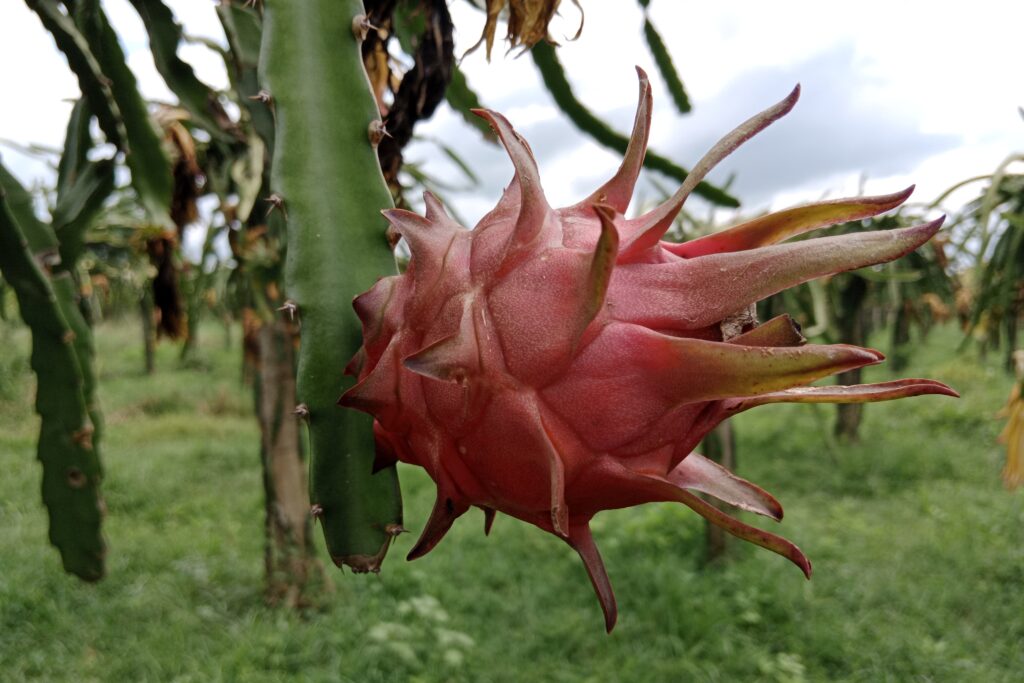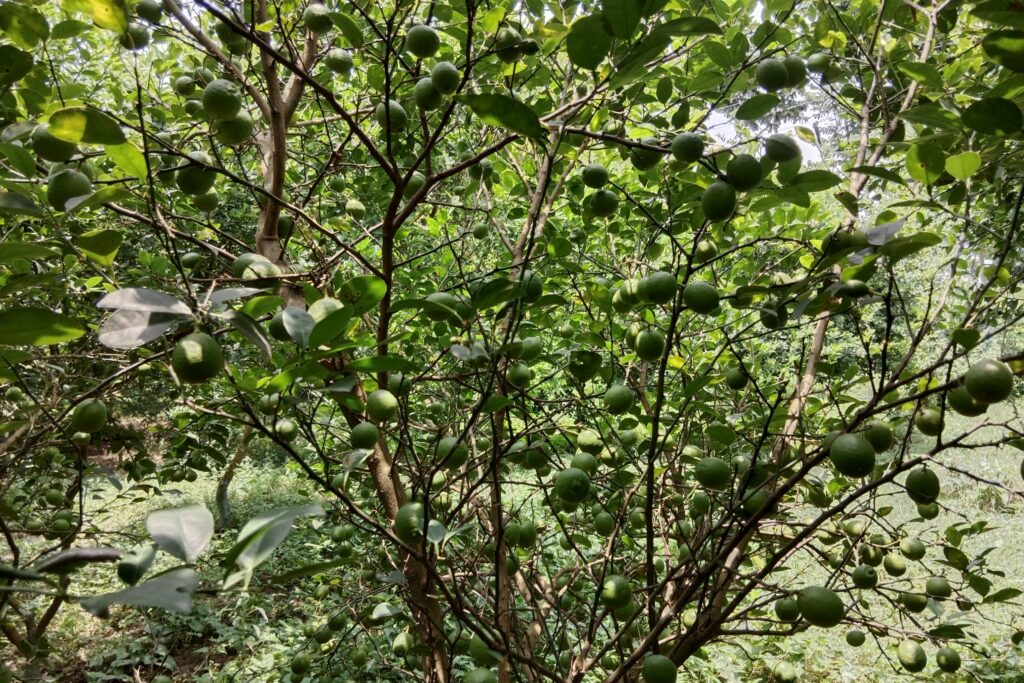Introduction
Phosphorus deficiency in maize is a critical issue that can severely impact crop growth, yield, and quality. Phosphorus (P), an essential macronutrient, plays a vital role in energy transfer, photosynthesis, nutrient movement, and the development of roots, flowers, and seeds in maize (Zea mays). Maize is particularly sensitive to phosphorus deficiency during its early stages, as adequate phosphorus is crucial for root establishment and early vigor.
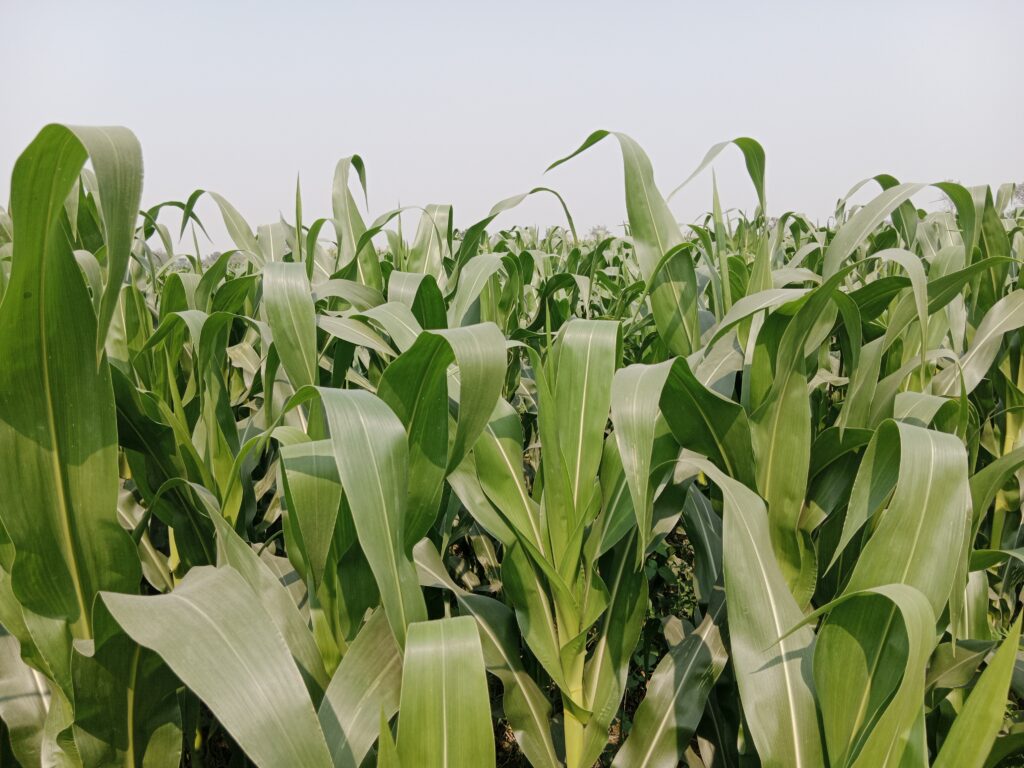
When phosphorus levels are insufficient, plants exhibit stunted growth, poor root development, and reduced yields, posing significant challenges for farmers. Understanding the symptoms, causes, and management strategies for phosphorus deficiency is essential for optimizing maize production and ensuring sustainable agricultural practices.
Symptoms of Phosphorus Deficiency in Maize
Phosphorus deficiency in maize manifests through several visual and physiological symptoms, including:
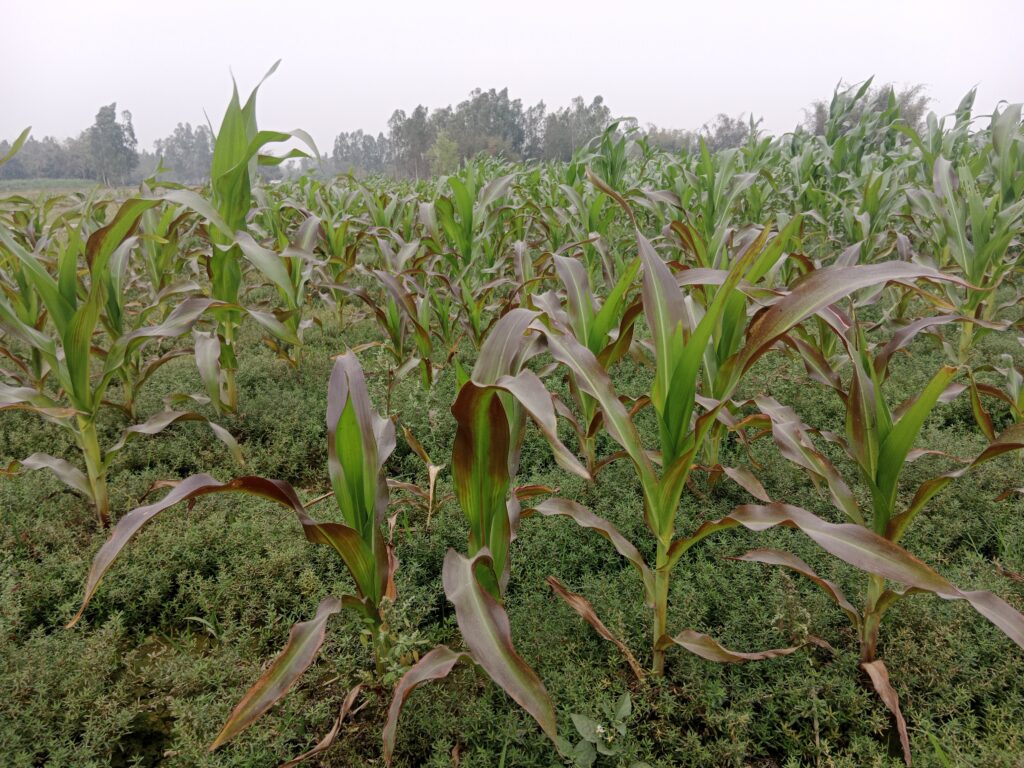
a). Dark Green or Purple Leaves
One of the most distinctive symptoms of phosphorus deficiency in maize is the dark green or purplish discoloration of leaves, particularly on the edges and undersides, caused by the accumulation of anthocyanin pigments. Young plants appear dwarfed and thin, with dark green leaves, while leaf margins, veins, and stems develop purple tints that may spread across the entire leaf blade. Older leaves of young plants are typically affected first, and the reddish or purplish discoloration is usually visible only during the juvenile growth stage.
b). Stunted Growth
Plants exhibit reduced height and overall growth due to impaired cell division and energy metabolism.
c). Delayed Maturity
Phosphorus-deficient maize plants often show delayed tasseling and silking, which can extend the growing period.
d). Poor Root Development
Roots may appear underdeveloped, short, and thin, limiting the plant’s ability to absorb water and nutrients.
e). Reduced Yield
Phosphorus deficiency in maize leads to fewer and smaller kernels, resulting in lower grain yield and poor crop quality.
Importance of Phosphorus in Maize Cultivation
A crucial ingredient for maize, phosphorus (P) is essential to the plant’s growth and development from germination to harvest. Better crop establishment, early plant growth, consistent maturity, increased yields, and earlier harvests are all guaranteed. Maize production can be significantly impacted by phosphorus deficit, which is frequently made worse by acidic or alkaline soils, low organic matter, cold or rainy weather, and limited soil reserves. For crops to operate at their best and be resilient to environmental challenges, it must be present.
Phosphorus supports maize by promoting strong root systems, enabling efficient nutrients and water absorption, and enhancing seedling vigor. Early-season availability aids energy transfer, photosynthesis, and cell division, leading to robust plant growth and early vigor. It also ensures uniform maturity across the field, reducing grain losses during harvest and improving grain quality by ensuring consistent kernel development and moisture content.
Additionally, phosphorus boosts maize yields by enhancing photosynthesis, nutrient mobilization, and stress tolerance. It increases biomass production and ensures proper grain filling, resulting in more kernels per cob and larger kernel size. By accelerating growth and maturity, phosphorus brings forward the harvest date, helping farmers avoid adverse weather, reduce pest risks, and plan timely planting of subsequent crops.
Causes of Phosphorus Deficiency in Maize
Several factors contribute to phosphorus deficiency in maize:
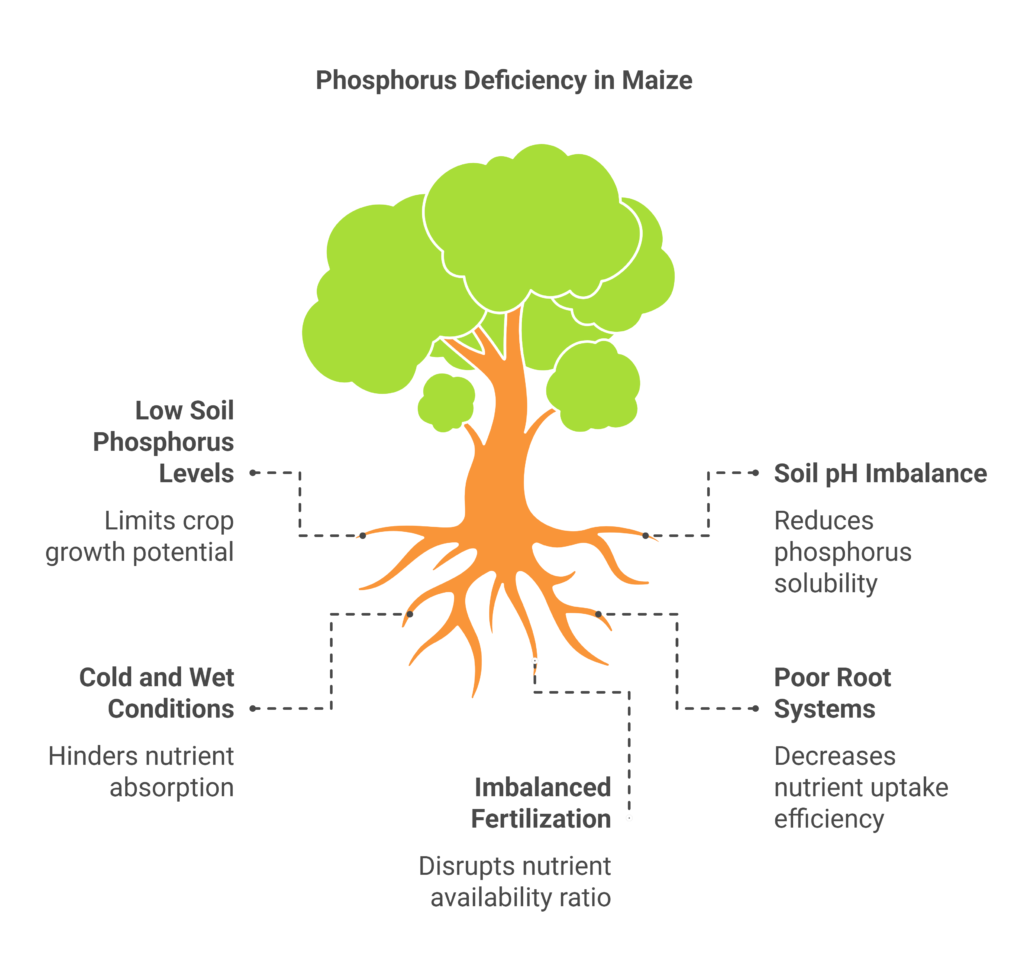
a). Low Soil Phosphorus Levels
Soils with inherently low phosphorus content or those that have been over-farmed without adequate fertilization are prone to phosphorus deficiency, which can significantly impact crop growth and productivity.
b). Soil pH Imbalance
The availability of phosphorus depends heavily on the pH of the soil since it binds with calcium in alkaline soils (pH >7), decreasing its solubility and accessibility for plant uptake, and with iron and aluminum in acidic soils (pH <6), rendering it unavailable to plants.
c). Cold and Wet Conditions
Cold temperatures and waterlogged soil significantly hinder phosphorus uptake by slowing down root activity and microbial processes that are essential for releasing phosphorus into the soil. In such conditions, the roots become less efficient at absorbing nutrients, and the microbial activity responsible for breaking down organic matter and converting phosphorus into plant-available forms is suppressed. This combination of factors leads to reduced phosphorus availability, negatively impacting plant growth and development, particularly in crops like maize that require adequate phosphorus during early growth stages.
d). Poor Root Systems
Plants’ ability to absorb phosphorus can be significantly reduced by damaged or underdeveloped root systems, which are frequently brought on by pests, illnesses, or compacted soils. Roots that are weakened are much less able to sift through the soil and absorb vital nutrients like phosphorus. Compacted soils limit the growth and penetration of roots, and diseases and pests can harm root tissues directly, which further hinders the intake of nutrients. Poor root systems can result in stunted growth, decreased vigor, and lower crop yields since phosphorus is needed for energy transmission, root development, and overall plant growth. Therefore, it is critical to address these concerns through appropriate soil management and pest control measures.
e). Imbalanced Fertilization
Imbalanced fertilization, particularly the over-reliance on nitrogen (N) and potassium (K) fertilizers without sufficient phosphorus (P) application, can lead to phosphorus deficiencies in maize crops. Nitrogen and potassium are essential nutrients, but excessive use without balancing phosphorus levels disrupts the nutrient ratio in the soil, limiting the availability of phosphorus for plant uptake. This imbalance can hinder critical processes such as root development, energy transfer, and photosynthesis, ultimately affecting crop growth and yield. To ensure optimal plant health and productivity, it is crucial to adopt a balanced fertilization approach that includes adequate phosphorus application based on soil testing and crop requirements.
How to Fix Phosphorus Deficiency in Maize
Addressing phosphorus deficiency in maize requires a combination of soil management and fertilization strategies:
a). Apply phosphorus-rich fertilizers such as diammonium phosphate (DAP), singe super phosphate (SSP), or triple superphosphate (TSP) based on soil test recommendations.
b). Foliar spray of DAP 30g /liter water.
c). Use bio-slurry from biogas digesters at the rate of 1 liter/square meter.
d). Apply bone meal (1000-2000 kg/ha).
Preventing Phosphorus Deficiency in Maize
Preventing phosphorus deficiency in maize involves proactive soil and crop management practices:
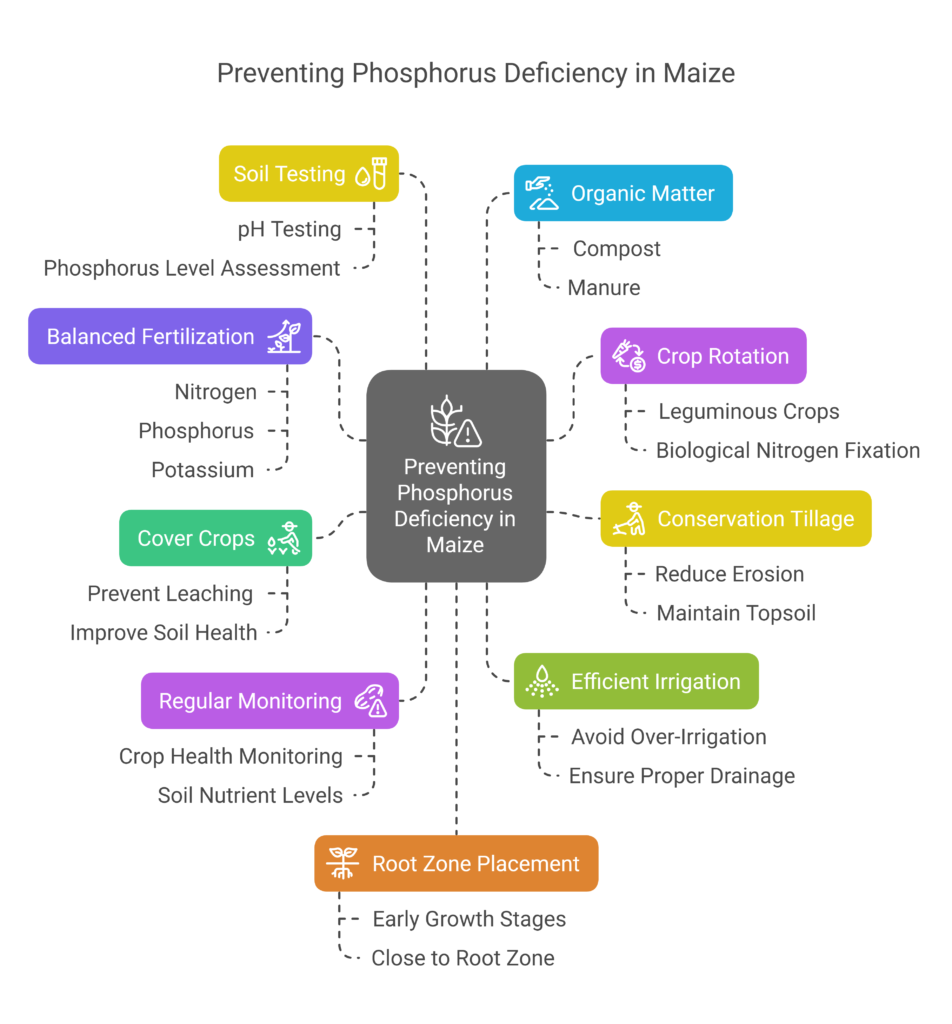
a). Balanced Fertilization
Use a balanced fertilizer program that includes nitrogen, phosphorus, and potassium (NPK) in appropriate ratios.
b). Crop Rotation
Rotate maize with leguminous crops that can improve soil phosphorus availability through biological nitrogen fixation and organic matter addition.
c). Conservation Tillage
Adopt conservation tillage practices to reduce soil erosion and maintain phosphorus-rich topsoil.
d). Cover Crops
Plant cover crops to prevent nutrient leaching and improve soil health, which can enhance phosphorus availability.
e). Regular Monitoring
Continuously monitor crop health and soil nutrient levels to detect and address deficiencies early.
f). Efficient Irrigation
Avoid over-irrigation, which can lead to phosphorus leaching, and ensure proper drainage to prevent waterlogging.
g). Soil Testing
Perform a soil test to find out the soil’s pH and phosphorus levels, which offers important information for choosing fertilizer treatments. To ensure optimal phosphorus availability for plant uptake, treat acidic soils with lime to increase the pH or alkaline soils with sulfur to lower the pH.
i). Organic Matter
Examples of organic matter that can improve soil structure and release phosphorus gradually include compost and manure.
j). Root Zone Placement
Apply phosphorus fertilizers close to the root zone to enhance uptake efficiency, especially during early growth stages.
Conclusion
Phosphorus deficiency in maize is a significant challenge that can severely impact crop productivity. By understanding the symptoms, identifying the causes, and implementing effective management and prevention strategies, farmers can ensure optimal phosphorus availability and maximize maize yields. Sustainable soil management practices, combined with targeted fertilization, are key to addressing this issue and promoting long-term agricultural productivity.

